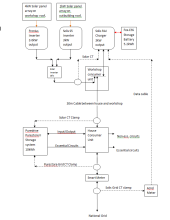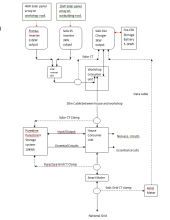ScottishBadger
New Member
- Joined
- Nov 19, 2022
- Messages
- 30
Hi all, hoping someone can shed some light on this.
My Solis RAI charger is programmed to charge the battery from the grid for 4 hours every night on cheap-rate electricity, but it is not getting much of a charge. Software I have on the computer shows 640W going out to the workshop, where the charger and battery are, and there are no other power demands during the night. When I go and check it in the morning, it appears to have taken in around 2.4kWh, which more or less tallies with the power flow figure.
Here's the thing - this means it's only charging at around 11Amp! The battery type (FOX) is selected correctly on the charger menu, and it is indeed charging for the full 4 hours. The battery is rated for charging at up to 100A, the manual charge current setting on the charger says 60A, but when I go to Advanced Info>BMS, it tells me the charge current is set to 12.5A, and I can't see any way to adjust it? I do not know if this is a charger limit or a BMS limit that is stopping it charging correctly, but I do know it's as much use as an ashtray on a motorcycle as is......
I have informed the installer and despite initial emails saying someone will contact me, there has been no contact to discuss the problem or suggest a solution since reporting it 6 days ago. Seems a lot of these companies are quick at taking your money but not so good at customer service afterwards - maybe just as well I haven't made the final payment (and won't until it's working correctly)! If there's a simple solution, I'll do it myself rather than have the hassle of waiting for the installer.
Any help appreciated, thanks.
My Solis RAI charger is programmed to charge the battery from the grid for 4 hours every night on cheap-rate electricity, but it is not getting much of a charge. Software I have on the computer shows 640W going out to the workshop, where the charger and battery are, and there are no other power demands during the night. When I go and check it in the morning, it appears to have taken in around 2.4kWh, which more or less tallies with the power flow figure.
Here's the thing - this means it's only charging at around 11Amp! The battery type (FOX) is selected correctly on the charger menu, and it is indeed charging for the full 4 hours. The battery is rated for charging at up to 100A, the manual charge current setting on the charger says 60A, but when I go to Advanced Info>BMS, it tells me the charge current is set to 12.5A, and I can't see any way to adjust it? I do not know if this is a charger limit or a BMS limit that is stopping it charging correctly, but I do know it's as much use as an ashtray on a motorcycle as is......
I have informed the installer and despite initial emails saying someone will contact me, there has been no contact to discuss the problem or suggest a solution since reporting it 6 days ago. Seems a lot of these companies are quick at taking your money but not so good at customer service afterwards - maybe just as well I haven't made the final payment (and won't until it's working correctly)! If there's a simple solution, I'll do it myself rather than have the hassle of waiting for the installer.
Any help appreciated, thanks.





